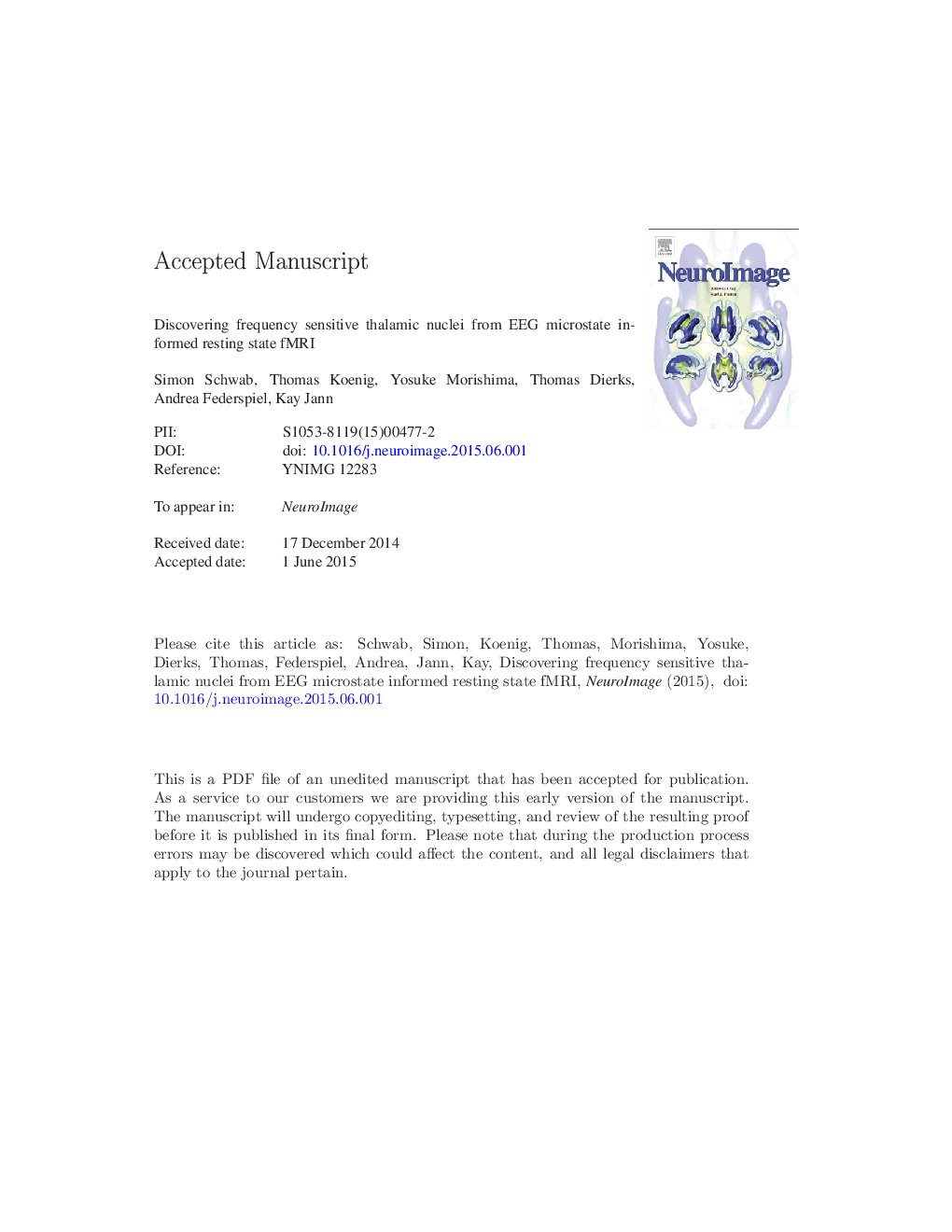| Article ID | Journal | Published Year | Pages | File Type |
|---|---|---|---|---|
| 6025136 | NeuroImage | 2017 | 24 Pages |
Abstract
Microstates (MS), the fingerprints of the momentarily and time-varying states of the brain derived from electroencephalography (EEG), are associated with the resting state networks (RSNs). However, using MS fluctuations along different EEG frequency bands to model the functional MRI (fMRI) signal has not been investigated so far, or elucidated the role of the thalamus as a fundamental gateway and a putative key structure in cortical functional networks. Therefore, in the current study, we used MS predictors in standard frequency bands to predict blood oxygenation level dependent (BOLD) signal fluctuations. We discovered that multivariate modeling of BOLD-fMRI using six EEG-MS classes in eight frequency bands strongly correlated with thalamic areas and large-scale cortical networks. Thalamic nuclei exhibited distinct patterns of correlations for individual MS that were associated with specific EEG frequency bands. Anterior and ventral thalamic nuclei were sensitive to the beta frequency band, medial nuclei were sensitive to both alpha and beta frequency bands, and posterior nuclei such as the pulvinar were sensitive to delta and theta frequency bands. These results demonstrate that EEG-MS informed fMRI can elucidate thalamic activity not directly observable by EEG, which may be highly relevant to understand the rapid formation of thalamocortical networks.
Related Topics
Life Sciences
Neuroscience
Cognitive Neuroscience
Authors
Simon Schwab, Thomas Koenig, Yosuke Morishima, Thomas Dierks, Andrea Federspiel, Kay Jann,
